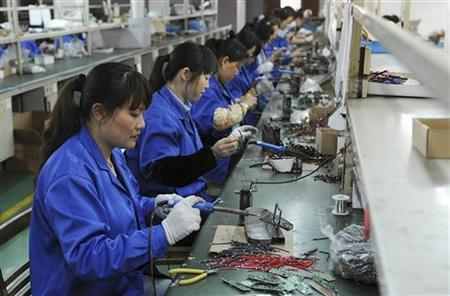 | « Back to article | Print this article |
India among most happy nations, China way behind
The Happy Planet Index (HPI) 2012 report, released in June this year, confirmed that the world is still "not a happy planet" as no country is able to combine success across the three goals of high life expectancy, high experienced well-being and living within environmental limits.
Whilst high-income countries scored low because of their large ecological footprints, the lowest income countries in sub-Saharan Africa scored even lower because of low life expectancy and low well-being.
Click NEXT to read more...
India among most happy nations, China way behind
High and medium development Latin American countries happened to score the highest in delivering long and happy lives with a relatively low ecological footprint.
The Happy Planet Index (HPI) is a global measure of sustainable well-being. The new measure of human progress looks at the extent to which countries deliver long, happy, sustainable lives for the people that live in them.
Click NEXT to read more...
India among most happy nations, China way behind
The 2012 HPI report, a project of the new economics foundation (NEF), ranked 151 countries based on their efficiency – the extent to which each nation produced long and happy lives per unit of environmental input.
The HPI blends subjective and objective data to build a picture of progress within a country. The index uses global data on life expectancy, experienced well-being and ecological footprint to rank countries and ask the question: "how much well-being is achieved per unit of resource consumption?"
Click NEXT to read more...
India among most happy nations, China way behind
The HPI is calculated by multiplying the 'Experienced well-being' with the 'life expectancy' of a country and divide this sum by the 'ecological footprint' of it.
The NEF reasoned that the HPI is required as it puts current and future well-being at the heart of measurement.
It frames the development of each country in the context of real environmental limits.
Click NEXT to read more...
India among most happy nations, China way behind
A press briefing from the NEF said that the HPI "shows that while the challenges faced by rich resource-intensive nations and those with high levels of poverty and deprivation may be very different, the end goal is the same: to produce happy, healthy lives now and in the future.
The HPI demonstrates that the dominant Western model of development is not sustainable and we need to find other development paths towards sustainable well-being."
Click NEXT to read more...
India among most happy nations, China way behind
On a scale of 0 to 100 for the HPI, the HPI have a target for nations to aspire to by 2050 of 89. This is based on attainable levels of life expectancy and well-being and a reasonably-sized Ecological Footprint.
According to the HPI, for the second time, Costa Rica topped the HPI this year, with a substantial lead.
The report mentioned that its score of 64 in the HPI is due to it embracing "sustainability in its national policies: it produces 99% of its energy from renewable sources, has reversed deforestation in the country, and, in 2008, committed itself to becoming carbon neutral by 2021."
Click NEXT to read more...
India among most happy nations, China way behind
Costa Rica has the second highest life expectancy in the Americas, 79.3 years, which higher than the USA's; experienced well-being higher than many richer nations; and a per capita Ecological Footprint that is one third the size of the USA's.
But Costa Rica's footprint is larger than it would need to be for it to live within its fair share of planetary resources, and is larger than its own biocapacity (1.6 g ha per capita).
Click NEXT to read more...
India among most happy nations, China way behind
This is partly due to consumption patterns - the goods consumed by many in the country will have been produced in other countries that have less sustainable energy policies.
This goes to show that one country cannot achieve sustainability alone.
The second country is Vietnam with a HPI score of 60.4, followed by Colombia at third position with score of 59.8. The fourth country is Belize with a HPI score of 59.3 and El Salvador at fifth scoring 58.9.
Click NEXT to read more...
India among most happy nations, China way behind
With the Latin American countries near the top, Bangladesh came in at 11 with a score of 56.3. Pakistan came in at 16th scoring 54.1.
Bangladesh has a life expectancy of 68.9 years, experienced well-being at 5.0 and ecological footprint at 0.7. Pakistan has a life expectancy of 65.4 years, experienced well-being of 5.3 and ecological footprint at 0.8.
The highest ranking Western European nation is Norway at the 29th place, just after New Zealand at 28th. India came in at 32nd, scoring 50.9.
Click NEXT to read more...
India among most happy nations, China way behind
With a life expectancy of 65.4 years, experienced well-being of 5.0, India's footprint is at 0.9.
China is at 60 with an HPI score of 44.7. Although China has a life expectancy of 73.5 years, higher than most top ranking countries in the HPI, it's experienced well-being is low at 4.7 and ecological footprint even lower at 2.1.
However, both India and China has done better than USA in the 105th position with a HPI score of 37.3. The bottom five positions of the 151 ranks are held respectively by Mali, Central African Republic, Qatar, Chad and Botswana.
Click NEXT to read more...
India among most happy nations, China way behind
The report also maintained that countries that do well on the HPI still suffer many problems.
It pointed out that "many high-ranking countries are tainted by important human rights issues. Though one would expect the infringement of rights to negatively impact on the wellbeing of some people in the country, the HPI does not set out to directly measure those rights."
"Furthermore, because it is likely that people directly affected by extreme human rights abuses represent a minority, the population average well-being score may not fully reflect this harm (even when inequality is accounted for). In the same vein, the HPI does not directly measure the degradation of ecosystems associated with soil erosion and deforestation, or impacts on biodiversity, or local pollution issues."
Click NEXT to read more...
India among most happy nations, China way behind
Alongside this report, NEF is launching a Happy Planet charter through which they are calling on government to adopt new measures of human progress that establish the goal of delivering sustainable well-being for all at the heart of our societal and economic decision making process.
They called on the United Nations to develop an indicator that builds on the Happy Planet Index and measures progress towards the key goal for a better future: sustainable well-being for all.











